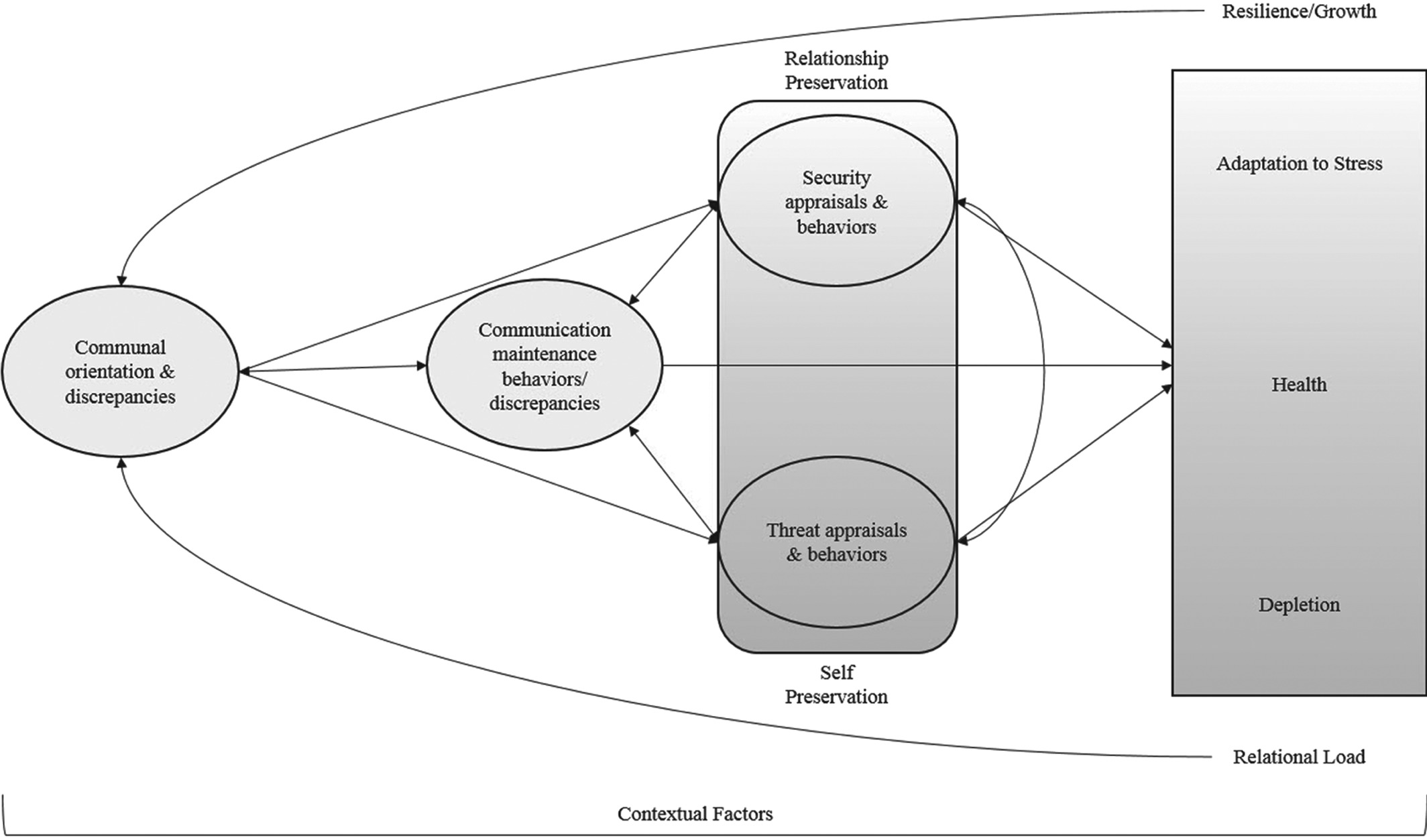5.3 Resilience Communication Theories
Human resilience is “the ability to”bounce back" or reintegrate after difficult life experiences"
Resilience is not possessed by individual but by discourse, interaction, and processes:
crafting normalcy
affirming identity anchors:
- identity anchor is “a relatively enduring cluster of identity discourses upon which individuals and their familial, collegial, and/or community members rely when explaining who they are for themselves and in relation to each other.”
maintaining and using communication networks
- Social capital is important in time of need
putting alternative logics to work
downplaying negative feelings while foregrounding positive emotions
(Richardson 2002) defines resilience as “the process of reintegrating from disruptions in life”
- requires “trigger event”
(AFIFI, MERRILL, and DAVIS 2016)
Theory of resilience and relational load (TRRL) in the context of social
based on theory of
emotional capital
adaptive calibration model, allostatic load, investment model, family systems theory, affectionate exchange theory, broaden and build theory
Assumptions
people want to feel validated and secure, based on sociometer hypothesis, intergroup theories, social identity theory, evolutionary theories (e.g., exchange theory).
stress is natural and necessary (either good or bad).
good stress = positive perception of stressors
bad stress = distress = negative perception of stressors
body and mind work together to cope with stress
body has a natural diurnal rhythm
relationship have homeostasis that is “continually being calibrated in response to stress and the communication of stress.”
Propositions:
“Validating communicative maintenance behaviors and actions over time build positive emotional reserves. Emotional reserves reflect the accumulation of investments (i.e., maintenance) and discrepancies in investments”
Communal orientation & discrepancies influence communication maintenance behaviors/discrepancies, and vice versa
Communal orientation, emotional reserves, discrepancies in the communal orientation influence how one perceives stressors, which later influence their investment in the relationship
communal orientation and emotional reserves, discrepancies int eh communal orientation influence threat and security-based appraisals and communication pattern
Similar constructs to communal orientation are cognitive interdependence, couple identity, communal coping
self-control could be depleted
continued depletion of resources and increased stress increase relational load
short-term depletion and relation load have short-term and long-term health consequences respectively.
“Security-based appraisals and communication patterns facilitate resilience, the potential to thrive, and short-term and long-term health”
Communicative maintenance strategies can be learned
Resilience is “the ability to adapt positively when confronted with adversity or stress” (Luthar 2003)
positive relationship maintenance can serve as resilience in close relationships, via
nonverbal behaviors
perceptions

Picture from Personal Relationships, Volume: 23, Issue: 4, Pages: 663-683, First published: 26 October 2016, DOI: (10.1111/pere.12159)
Resilience include:
Individual/relational resilience: social relationship can increase adaptive ability to adversity. To increase one’s resilience
giving and receiving affection
exchanging person-centered messages
being present
family resilience
- parent-child (dyadic) can foster resilience
organizational resilience
- 5 tensional processes
community resilience
- bouncing forward = interactional process that helps individuals to adapt successfully to changing circumstances
national resilience
- resilience is defined by Hamilton Bean as a “central trope,” “shared social phenomenon” that solidify “shared feelings of resoluteness.”
How undocumented youth cope with stress at the family level
Resilience is “the process by which individuals exposed to adversity exhibit positive adaptation in spite of this adversity.” It is a general pattern or process than a trait or quality.
To cope with stress, youths use strategies:
psychological suppression
distraction/diversion
reframing
normalizing
The individual as an asset
The family as a resource
Stress come from
unable to go places, unable to attend college, employment, help family financially, affordable health care
fear of detainment/deportation
- Covid-19 exposure directly influence stress, and indirectly influence stress and depress through media use and interpersonal communication.